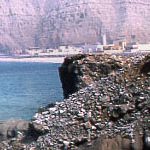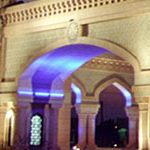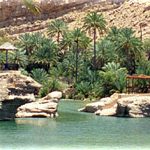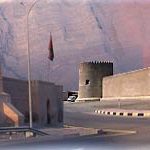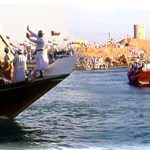Passengers arriving at Oman’s new flagship airport will have the opportunity to pre-book one of 7,000 parking spaces, a senior official has revealed.
All drivers arriving at the new airport will be able to reserve car park slots before arriving, Saud Nasser Said Al Hubaishi, General Manager of Readiness, Oman Airports Management Company, told Times of Oman, and some drivers can take advantage of reserved parking bays.
7,000 car parkings
“The new Muscat International Airport will have over 7,000 car parking spaces, all of which offer shaded car parking. We have two multi-storey buildings for short stay close to the forecourt, which is the entrance to the terminal building.
“For those looking to park in long stay, we are looking to implement a shuttle service to take passengers to the terminal. With the new systems in place, you can reserve your car park slot before you reach the airport, with the ease of cash and card payments. The car rental providers will also have a dedicated car park close to the terminal building.”
He was speaking ahead of 2017 Airports Council International (ACI) Airport Exchange forum, which will start from Wednesday, and will witness the participation of more than 1,500 aviation management experts from around the world.
The two-day forum will be held under the auspices of Yahya bin Saeed Al Jabri, Chairman of SEZAD and Chairman of the Board of Directors of OAMC.
The forum, which is being held at the Oman Convention & Exhibition Centre, is considered one of the most important gatherings on the global air transport calendar.
The ACI Airport Exchange forum is being hosted by Oman Airports Management Company to enhance the capacity of the Sultanate’s airports to serve different sectors through the exchange of knowledge and experience with some of the global experts in airport management.
Saud Nasser Said Al Hubaishi added: “The vision for Oman Airport Management Company is ‘to be among the top 20 airports in the world by 2020’ earning the title through delivering an exceptional Customer Experience. This journey started two years ago, with the launch of the company strategy and a refocus on enhancing our culture.
“Achieving such a vision requires having world class facilities, such as those we have in Salalah Airport, and in the new Muscat International Airport. But being among the top 20 is not only about the magnificent buildings, it’s also about our people themselves. As such, we are investing a lot in our people to support the culture of our 2020 vision.
“For a passenger, the most important components of their experience are the attitudes of the people they interact with and the ease of their journey through the airport, from the moment they arrive to the moment they leave… For me as a passenger, it’s not only about being in a beautiful setting, it’s about service.
“Our staff have undertaken customer experience training and leadership workshops to ensure our passengers are well looked after, both front of house and from the work going on behind the scenes. We firmly believe that happy staff lead to happy passengers. This is how we differentiate ourselves from other airports; through our culture. To add to the passenger experience we want to bring the unique identity of Oman into their journey through the new Muscat International Airport.
“We have a team dedicated to looking after artworks and entertaining activities, with the They are responsible for making Omani culture come alive in the airport through art installations and innovative campaigns.”
Al Hubaishi added: “We are introducing applications and technology into all aspects of the airport. We have self-service check-in, mobile check in and self-bag drop, as well as the option to book and pay via phone for any preferred services such as pre-booking fast track services and receiving the confirmation ahead of your arrival.
Dedicated routes
“Each category of traveller will have dedicated routes and facilities, so passengers can travel with convenience and ease. The new fast track facilities are available to everyone; you do not have to be a business class passenger to enjoy efficient travelling.
“We will also introduce a fully comprehensive call centre, so we can reach the customers before they reach us. As an example of how this service would be of benefit, should the car park be full, we will disseminate this information to the passengers before they arrive to the airport.
“We are really excited about the new retail offerings at the new Muscat International Airport. Our commercial team has procured both mainstream and luxury brands into the airport retail, as well as providing opportunities for travellers to purchase local products as mementos of their visit.
“We will be serving different passenger profiles and, as such, will offer everything from day-to-day items as well as high-end goods and services,” he summed up.
Regarding the security, he said: “The new airport has been designed with security and safety at its core using state of the art biometric smart technology to track any unauthorised access or inconsistencies. We have focused on creating a streamlined, integrated security process, whilst maintaining a great ambiance in the airport: This is an important part of the overall customer experience; when you feel safe and secure, your trip is calmer.”
It will take 10,000 people to operate, manage and maintain the new Muscat International Airport, who will be working on 24 hours shifts.
